If you have begun to make long bike routes and you are a lover of the background and the resistance, it may be overcome the 100 kilometers barrier in one day it can be one of your next challenges.
It will be many hours pedaling on the bicycle, so adapting the body to such an energy expenditure should be your priority if you want to complete the route with the best guarantees.
We have prepared a complete guide with the most frequent doubts that may arise to prepare your first 100 km bike route. In addition, we have one of the most experienced voices in this field in our country to give you the best advice. Is about
ZIORZA VILLA, European champion and four times from Spain of counterreloj 24 h. A runner capable of traveling 740 km by bike in one day.
Together with Ziortza Villa, we guide you in the planning of your next 100 km or higher route. When preparing it, always keep the following tips.
Preparation: Can anyone do it?
[Captation Id = "Attachment_655" Align = "Alignnone" Width = "900"]

Image: Munbaik - Unspash[/caption]
Making cycling routes greater than 100 kilometers is a challenge that can complete any amateur cyclist with adequate preparation. So don't be afraid. Everything will depend on a good training planning and that these are progressive, from less to more.
If you go out regularly but in distances of 30 km to 70 km on each route, the appropriate preparation time for this challenge ranges between six and eight weeks. If you are more beginner, it is advisable to extend the preparation period for another month. The frequency of exits will be between 2 and 3 a week and increase mileage and intensity by 10% every new week.
For Ziortza Villa
"Doing 100 kilometers by road bike is a distance that, with the necessary preparation, can be achieved. As long Try when we really feel that we are prepared to cover the kilometers with guarantees. Improve the physical form ".
The rhythm: What cadence must be carried?
[CAPTION ID = "Attachment_6529" Align = "Alignnone" Width = "900"]
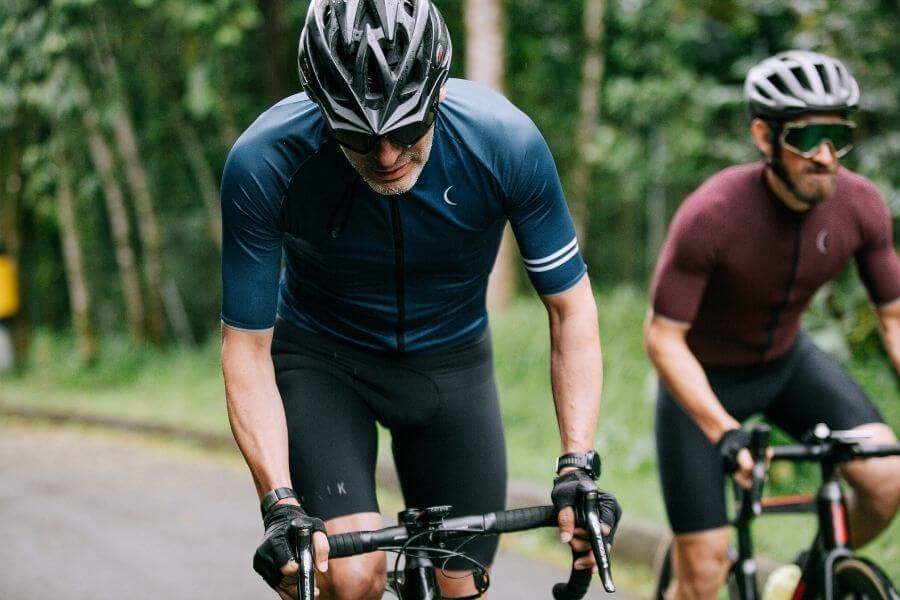
Image: Munbaik - Unspash[/caption]
When starting the challenge of completing more than 100 kilometers at one way out the rhythm must be as bearable and controlled as possible. But there are times when controlling it based only on sensations is very complicated. Therefore, to avoid making more efforts of the necessary ones, we recommend you to go out with a pulsometer or a cadence meter. It will allow you to move within constant values to manage your forces.
That said, you must establish a time of time to complete the 100 km: do it in three, four, five hours ... Hence we have to reach an average speed based on a certain pace. At 25 km/h on average 4 hours, 30 km/h will take 3 and a half hours, etc.
There is no standard rhythm that can serve as a reference. About this, Ziortza considers that "
The rhythm of bicycle outputs must be totally individual and according to the physical state of each cyclist. It is advisable to carry a pulsometer and not get out of the recommended parameters for each person during training. The first time a challenge is prepared and if the goal is only to cover the distance the rhythm must be calm and bearable. At all times you have to feel comfortable and increase the time and frequency of the outputs very progressively. Thus you will adapt naturally".
What kind of route choose
[Captation id = "Attachment_6533" Align = "Alignnone" Width = "900"]
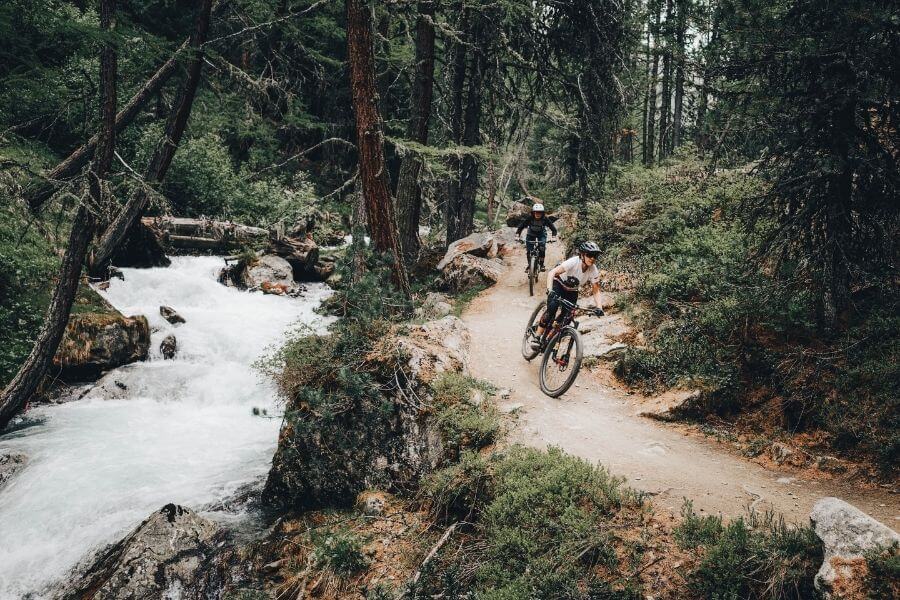
Image: Maio Graziano - UNSPLASH[/caption]
You may arise about the type of route to choose from and if it is preferable to bet on a route with more or less unevenness. "
If our goal is to complete the 100 kilometers, it is best to try to do it with little unevenness, so that the route is more bearable", recommends Ziortza Villa:"
Once the challenge is achieved, the slope can always be repeated and, therefore, the difficulty of the same".
Your workouts should have a similar orography in which you can sustain a constant and assumed pace during as long as possible.
What you must discard at start is very broken or chained ports. Once you have exceeded those first 100 kilometers in Llano you can make the challenge more difficult including some more slope, some soft port, etc. In addition, it is a good way to preserve motivation for this type of distances.
SECOND: How often do you have to eat and drink?
[Captation id = "Attachment_6538" Align = "Alignnone" Width = "900"]
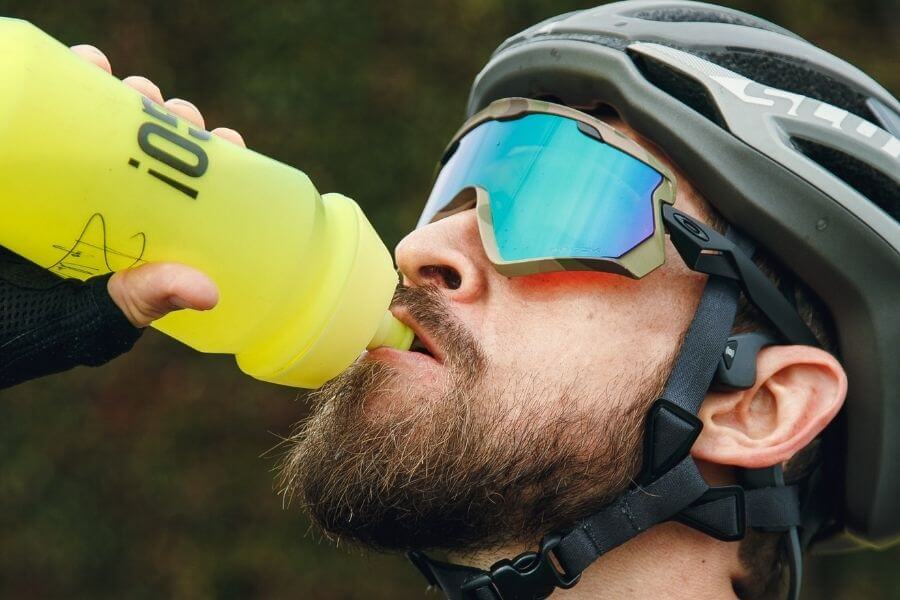
Image: Munbaik - Unspash[/caption]
Bringing a healthy and focused on the target is essential. It is also very important to know
When and how to eat food during the route. Do not forget to eat and drink frequently, even if you don't have to exceed. Drinking water every 15-20 minutes (even if you are not thirst) and eat a snack every hour (bar, gel, mini sandwich, fruit, a gel) is a good starting point.
It also carries easy digestion foods, rich in carbohydrates. The bars are a good ally to keep energy deposits at bay for several hours. But you can also take a fruit, such as banana or grapes, easy to intake and great energy power.
It also carries two large liquid drums (750 ml) or one with water and another with isotonic drink. You can take them smaller if you have the assurance that there will be sources on the tour. Do not skimp in the amount of liquid. You always have to wear more than you need, in case unforeseen arises.
For Ziortza Villa, the race food is a factor that is also trained: "
During the preparation period of the 100 km you have to plan the food and drink that we will need in each training, to habituate them. It is always advisable to eat something every 45 minutes or every hour. As for hydration, the temperature and climate must be taken into account, but usually We will need to drink at least a 500 ml drum with mineral salts per hour. This must be put into practice the previous outputs and know the sources or places where we can supply liquid”.
Equipment: essential accessories
[Captation id = "Attachment_6420" Align = "Alignnone" Width = "900"]
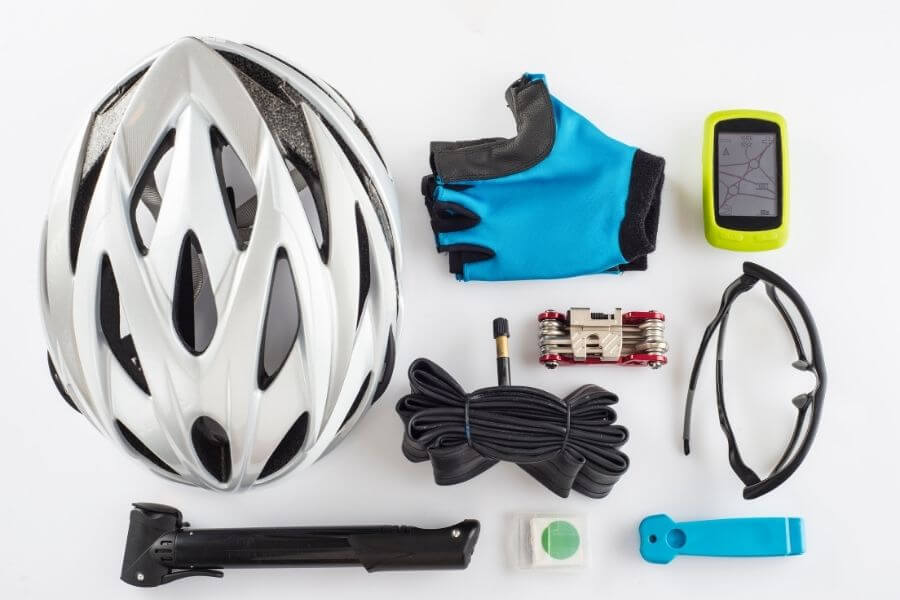
Image: Depositphotos[/caption]
To increase comfort during the march you can adapt your bicycle, whether mountain, road, etc., with components such as
a more comfortable armchair, ergonomic fists or a thicker handlebar tape. Also choose concrete equipment for both the preparation and for the day of the challenge. Do not change clothes at home exit, avoid experiments and always use the most comfortable.
"In long outputs it is always advisable
Zirta also recommends taking into account the weather and temperature. "
In long outputs it is always advisable to wear gloves to protect the hands, shelter clothes, rear light so that they see us well in places that have little visibility and two drums of liquid. Besides, you should always carry Basic Bicycle Tools (Rest, removable and CO2 pump covers and a multi -tool for unforeseen). We cannot forget cash and a mobile either. On the other hand, it ensures that the first long exits make them accompanied by other cyclists. Neither do you forget to warn at home you will do if you leave alone".
Is it necessary to make stops?
Should it be done 100 kilometers from the pull or is it recommended to make stops? On this point, Ziortza recommends introducing stops in your training as you progressively increase the mileage of your outputs. "
The first exits must be shorter and perhaps it is not necessary to stop. But as the distance is increasing, it is advisable to make stops. Especially since we will need to load the drums and we can take advantage of some stretching and rest a little".
Making stops is a positive appearance, keep in mind that you are not competing and that the goal is not to beat any records, but enjoy a long bicicelta exit. Of course, ensure that these pauses are short and spaced in time so that the muscles are not deactivated. For example, make a stop every 30 kilometers.
How to recover after a long route
[Captation id = "Attachment_6539" Align = "Alignnone" Width = "900"]
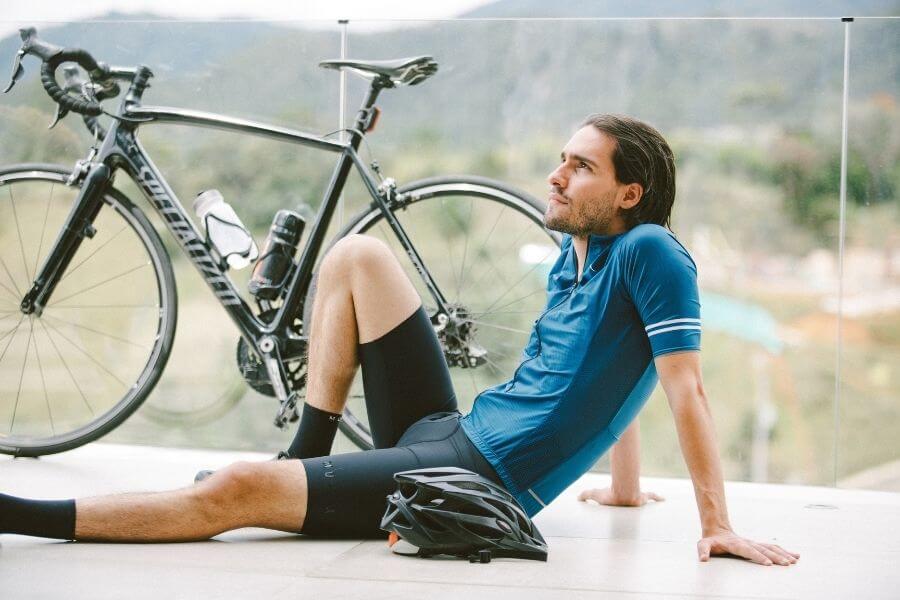
Image: Munbaik - Unspash[/caption]
After training sessions and also after successfully completing your first 100 km route by bicycle the recovery guidelines must be similar. Post-ruta recovery is based on two main pillars: food and rest.
Both factors must respect them almost more than training itself. Once you finish the session, do not expect too much to eat or drink. Make a decent meal, introducing foods rich in proteins and hydrates, during the first hour and a half after training. "
The recovery will be good as long as we do not exceed our limits", says Ziortza Villa:"
It is advisable to perform a stretching routine after each bike out".
Do leg stretching and trunk before and after the route and set at least two days a week of total rest. You can eliminate one of them by making a more relaxed and little mileage exit once you improve your resistance and background. "
Space bike outings by interleating rest days will also help us give the body a respite between training, especially in the first days of the plan. As you get physical form you can chain days in a row of activity more easily without accumulating fatigue", Recommended Ziortza.
Conclusion: Planning is the key
Completing your first route of 100 kilometers by bicycle in a single day is a beautiful challenge that will take you to a higher level as a cyclist. It is nothing impossible and there are no barriers for age or physical condition. With properly planned and structured training progressively everything is possible. But you must be constant and make an extra effort to maintain motivation.
 Image: Munbaik - Unspash[/caption]
Making cycling routes greater than 100 kilometers is a challenge that can complete any amateur cyclist with adequate preparation. So don't be afraid. Everything will depend on a good training planning and that these are progressive, from less to more.
If you go out regularly but in distances of 30 km to 70 km on each route, the appropriate preparation time for this challenge ranges between six and eight weeks. If you are more beginner, it is advisable to extend the preparation period for another month. The frequency of exits will be between 2 and 3 a week and increase mileage and intensity by 10% every new week.
For Ziortza Villa "Doing 100 kilometers by road bike is a distance that, with the necessary preparation, can be achieved. As long Try when we really feel that we are prepared to cover the kilometers with guarantees. Improve the physical form ".
Image: Munbaik - Unspash[/caption]
Making cycling routes greater than 100 kilometers is a challenge that can complete any amateur cyclist with adequate preparation. So don't be afraid. Everything will depend on a good training planning and that these are progressive, from less to more.
If you go out regularly but in distances of 30 km to 70 km on each route, the appropriate preparation time for this challenge ranges between six and eight weeks. If you are more beginner, it is advisable to extend the preparation period for another month. The frequency of exits will be between 2 and 3 a week and increase mileage and intensity by 10% every new week.
For Ziortza Villa "Doing 100 kilometers by road bike is a distance that, with the necessary preparation, can be achieved. As long Try when we really feel that we are prepared to cover the kilometers with guarantees. Improve the physical form ".
 Image: Munbaik - Unspash[/caption]
When starting the challenge of completing more than 100 kilometers at one way out the rhythm must be as bearable and controlled as possible. But there are times when controlling it based only on sensations is very complicated. Therefore, to avoid making more efforts of the necessary ones, we recommend you to go out with a pulsometer or a cadence meter. It will allow you to move within constant values to manage your forces.
That said, you must establish a time of time to complete the 100 km: do it in three, four, five hours ... Hence we have to reach an average speed based on a certain pace. At 25 km/h on average 4 hours, 30 km/h will take 3 and a half hours, etc.
There is no standard rhythm that can serve as a reference. About this, Ziortza considers that "The rhythm of bicycle outputs must be totally individual and according to the physical state of each cyclist. It is advisable to carry a pulsometer and not get out of the recommended parameters for each person during training. The first time a challenge is prepared and if the goal is only to cover the distance the rhythm must be calm and bearable. At all times you have to feel comfortable and increase the time and frequency of the outputs very progressively. Thus you will adapt naturally".
Image: Munbaik - Unspash[/caption]
When starting the challenge of completing more than 100 kilometers at one way out the rhythm must be as bearable and controlled as possible. But there are times when controlling it based only on sensations is very complicated. Therefore, to avoid making more efforts of the necessary ones, we recommend you to go out with a pulsometer or a cadence meter. It will allow you to move within constant values to manage your forces.
That said, you must establish a time of time to complete the 100 km: do it in three, four, five hours ... Hence we have to reach an average speed based on a certain pace. At 25 km/h on average 4 hours, 30 km/h will take 3 and a half hours, etc.
There is no standard rhythm that can serve as a reference. About this, Ziortza considers that "The rhythm of bicycle outputs must be totally individual and according to the physical state of each cyclist. It is advisable to carry a pulsometer and not get out of the recommended parameters for each person during training. The first time a challenge is prepared and if the goal is only to cover the distance the rhythm must be calm and bearable. At all times you have to feel comfortable and increase the time and frequency of the outputs very progressively. Thus you will adapt naturally".
 Image: Maio Graziano - UNSPLASH[/caption]
You may arise about the type of route to choose from and if it is preferable to bet on a route with more or less unevenness. "If our goal is to complete the 100 kilometers, it is best to try to do it with little unevenness, so that the route is more bearable", recommends Ziortza Villa:"Once the challenge is achieved, the slope can always be repeated and, therefore, the difficulty of the same".
Your workouts should have a similar orography in which you can sustain a constant and assumed pace during as long as possible.
What you must discard at start is very broken or chained ports. Once you have exceeded those first 100 kilometers in Llano you can make the challenge more difficult including some more slope, some soft port, etc. In addition, it is a good way to preserve motivation for this type of distances.
Image: Maio Graziano - UNSPLASH[/caption]
You may arise about the type of route to choose from and if it is preferable to bet on a route with more or less unevenness. "If our goal is to complete the 100 kilometers, it is best to try to do it with little unevenness, so that the route is more bearable", recommends Ziortza Villa:"Once the challenge is achieved, the slope can always be repeated and, therefore, the difficulty of the same".
Your workouts should have a similar orography in which you can sustain a constant and assumed pace during as long as possible.
What you must discard at start is very broken or chained ports. Once you have exceeded those first 100 kilometers in Llano you can make the challenge more difficult including some more slope, some soft port, etc. In addition, it is a good way to preserve motivation for this type of distances.
 Image: Munbaik - Unspash[/caption]
Bringing a healthy and focused on the target is essential. It is also very important to know When and how to eat food during the route. Do not forget to eat and drink frequently, even if you don't have to exceed. Drinking water every 15-20 minutes (even if you are not thirst) and eat a snack every hour (bar, gel, mini sandwich, fruit, a gel) is a good starting point.
It also carries easy digestion foods, rich in carbohydrates. The bars are a good ally to keep energy deposits at bay for several hours. But you can also take a fruit, such as banana or grapes, easy to intake and great energy power.
It also carries two large liquid drums (750 ml) or one with water and another with isotonic drink. You can take them smaller if you have the assurance that there will be sources on the tour. Do not skimp in the amount of liquid. You always have to wear more than you need, in case unforeseen arises.
For Ziortza Villa, the race food is a factor that is also trained: "During the preparation period of the 100 km you have to plan the food and drink that we will need in each training, to habituate them. It is always advisable to eat something every 45 minutes or every hour. As for hydration, the temperature and climate must be taken into account, but usually We will need to drink at least a 500 ml drum with mineral salts per hour. This must be put into practice the previous outputs and know the sources or places where we can supply liquid”.
Image: Munbaik - Unspash[/caption]
Bringing a healthy and focused on the target is essential. It is also very important to know When and how to eat food during the route. Do not forget to eat and drink frequently, even if you don't have to exceed. Drinking water every 15-20 minutes (even if you are not thirst) and eat a snack every hour (bar, gel, mini sandwich, fruit, a gel) is a good starting point.
It also carries easy digestion foods, rich in carbohydrates. The bars are a good ally to keep energy deposits at bay for several hours. But you can also take a fruit, such as banana or grapes, easy to intake and great energy power.
It also carries two large liquid drums (750 ml) or one with water and another with isotonic drink. You can take them smaller if you have the assurance that there will be sources on the tour. Do not skimp in the amount of liquid. You always have to wear more than you need, in case unforeseen arises.
For Ziortza Villa, the race food is a factor that is also trained: "During the preparation period of the 100 km you have to plan the food and drink that we will need in each training, to habituate them. It is always advisable to eat something every 45 minutes or every hour. As for hydration, the temperature and climate must be taken into account, but usually We will need to drink at least a 500 ml drum with mineral salts per hour. This must be put into practice the previous outputs and know the sources or places where we can supply liquid”.
 Image: Depositphotos[/caption]
To increase comfort during the march you can adapt your bicycle, whether mountain, road, etc., with components such as a more comfortable armchair, ergonomic fists or a thicker handlebar tape. Also choose concrete equipment for both the preparation and for the day of the challenge. Do not change clothes at home exit, avoid experiments and always use the most comfortable.
Image: Depositphotos[/caption]
To increase comfort during the march you can adapt your bicycle, whether mountain, road, etc., with components such as a more comfortable armchair, ergonomic fists or a thicker handlebar tape. Also choose concrete equipment for both the preparation and for the day of the challenge. Do not change clothes at home exit, avoid experiments and always use the most comfortable.
 Image: Munbaik - Unspash[/caption]
After training sessions and also after successfully completing your first 100 km route by bicycle the recovery guidelines must be similar. Post-ruta recovery is based on two main pillars: food and rest.
Both factors must respect them almost more than training itself. Once you finish the session, do not expect too much to eat or drink. Make a decent meal, introducing foods rich in proteins and hydrates, during the first hour and a half after training. "The recovery will be good as long as we do not exceed our limits", says Ziortza Villa:"It is advisable to perform a stretching routine after each bike out".
Do leg stretching and trunk before and after the route and set at least two days a week of total rest. You can eliminate one of them by making a more relaxed and little mileage exit once you improve your resistance and background. "Space bike outings by interleating rest days will also help us give the body a respite between training, especially in the first days of the plan. As you get physical form you can chain days in a row of activity more easily without accumulating fatigue", Recommended Ziortza.
Image: Munbaik - Unspash[/caption]
After training sessions and also after successfully completing your first 100 km route by bicycle the recovery guidelines must be similar. Post-ruta recovery is based on two main pillars: food and rest.
Both factors must respect them almost more than training itself. Once you finish the session, do not expect too much to eat or drink. Make a decent meal, introducing foods rich in proteins and hydrates, during the first hour and a half after training. "The recovery will be good as long as we do not exceed our limits", says Ziortza Villa:"It is advisable to perform a stretching routine after each bike out".
Do leg stretching and trunk before and after the route and set at least two days a week of total rest. You can eliminate one of them by making a more relaxed and little mileage exit once you improve your resistance and background. "Space bike outings by interleating rest days will also help us give the body a respite between training, especially in the first days of the plan. As you get physical form you can chain days in a row of activity more easily without accumulating fatigue", Recommended Ziortza.





























